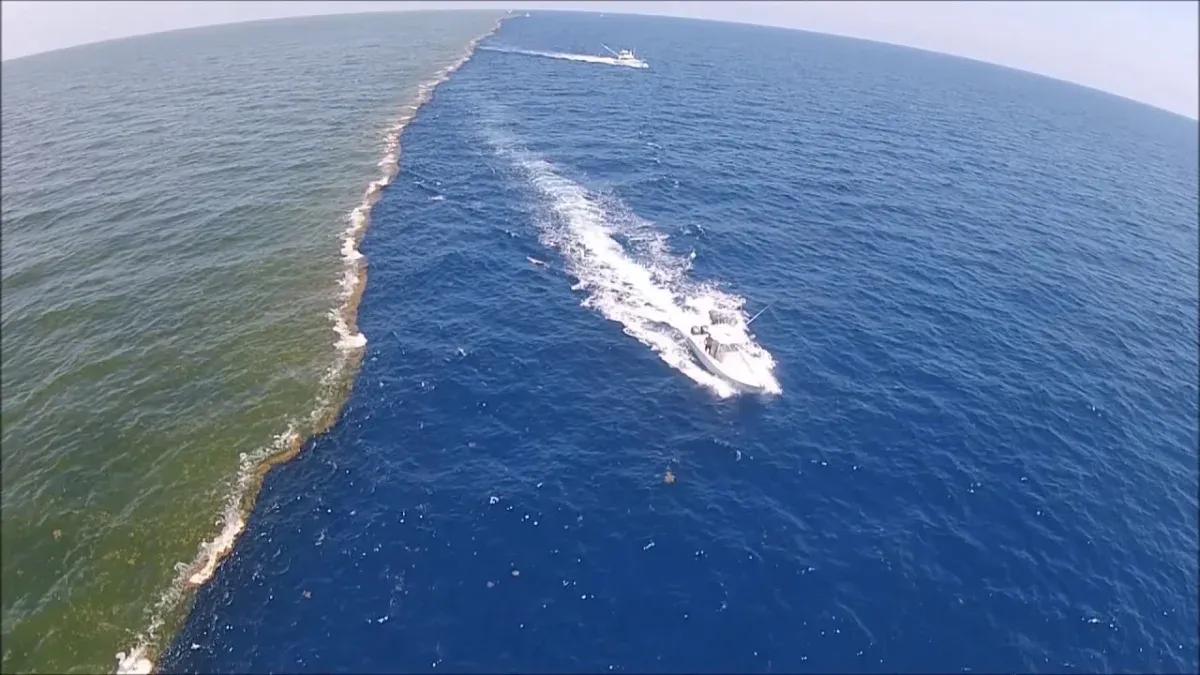Do the Atlantic Ocean and the Pacific Ocean Mix?
In a word, Yes. The Pacific Ocean and the Atlantic Ocean mix. However, it is not as simple as two bodies of water simply blending together.
The two oceans have different densities, temperatures, and salinities, which means that their waters do not mix easily. This is especially true in the upper layers of the ocean, where the differences in density are greatest.
At the surface, the Pacific Ocean is generally warmer and less salty than the Atlantic Ocean. This is because the Pacific Ocean receives more sunlight and has a lower rate of evaporation than the Atlantic Ocean. The difference in temperature and salinity between the two oceans creates a barrier that prevents their waters from mixing easily.
However, there are some areas where the Pacific Ocean and the Atlantic Ocean do mix. One such area is the Drake Passage, which is the narrow strait that separates Antarctica from South America. The strong currents in the Drake Passage mix the waters of the Pacific Ocean and the Atlantic Ocean, creating a body of water known as the circumpolar current.
 |
| This is NOT
the meeting point of the two major oceans. It is the Fraser River
flowing into the Pacific Ocean water at the strait of Georgia in
Vancouver, Canada. |
An area where the Pacific Ocean and the Atlantic Ocean don't mix is in the Gulf of Mexico.
Social media posts claiming the Gulf of Mexico is the meeting point of these oceans where they don't mix are inaccurate.
The Mississippi River carries a large amount of sediment and freshwater into the Gulf of Mexico. This freshwater is less dense than the saltier Gulf water, so it tends to float on top for a while, creating a layered effect. These layers mix gradually, not abruptly. This layering is why the Gulf of Mexico can sometimes appear brown due to the suspended sediment, not because of the Pacific ocean and Atlantic Ocean meeting.
The reasons why the Pacific and Atlantic Oceans mix:
- Currents: The Atlantic and Pacific Oceans are connected by a number of currents, including the Gulf Stream, the North Atlantic Drift, and the Antarctic Circumpolar Current. These currents transport water from one ocean to the other, which helps to mix the waters of the two oceans.
- Tides: The tides also help to mix the waters ofthePacific and Atlantic Oceans. As the tides rise and fall, they stir up the water column, which helps to mix the surface waters with the deeper waters.
- Winds: The winds also play a role in mixing the waters of the Pacific and Atlantic Oceans. The winds cause the surface waters to move, which helps to mix the waters from different areas together.
 |
| Atlantic Ocean and the Pacific Ocean Mix at Drake passage |
The Atlantic and the Pacific Ocean Real Meeting point
Contrary to popular belief, the Pacific and Atlantic Oceans don't meet at a specific point with a clear boundary, in a way that creates a clear separation point. They are part of a continuous body of water. However, they are considered separate oceans due to their distinct characteristics like water temperature, salinity, and currents.
However, there's a specific point where the waters are closest:
The Drake Passage, Cape Horn: Located at the southern tip of South America, Cape Horn marks the southernmost point of land. Here, the Atlantic and Pacific Oceans are very close, with strong currents carrying water from the Pacific into the Atlantic.
 |
| The REAL meeting point between the Atlantic and the Pacific Oceans, The Drake Passage, south of Cape Horn, Chile Photo © Dea/gianni Oliva via Getty Images |
Overall, the Pacific and Atlantic Oceans do mix, but it's not as simple as two liquids merging instantly. Differences in density, temperature, and salinity create barriers that slow down this mixing. Strong currents in some areas, like the Drake Passage south of South America, help these oceans exchange water more readily.








%20(1).webp)